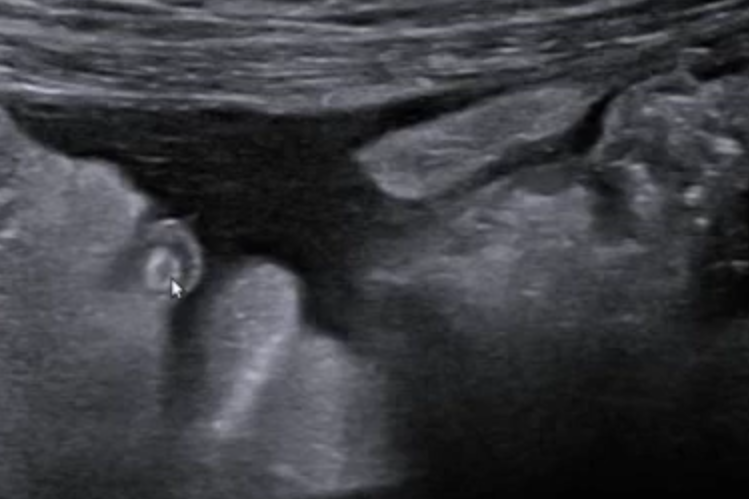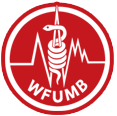- WFUMB Stands with EFSUMB: stop bloodshed in Ukraine - read our statement here >
WFUMB Webinar Quiz
WFUMB Video of the Month September 2019
September 27, 2019
WFUMB Video of the Month October 2019
October 11, 2019WFUMB Webinar: Fatty Liver an emerging problem in clinical practice
Quiz-summary
0 of 16 questions completed
Questions:
- 1
- 2
- 3
- 4
- 5
- 6
- 7
- 8
- 9
- 10
- 11
- 12
- 13
- 14
- 15
- 16
Information
|
You must specify a text. |
|
|
You must specify a text. |
|
|
You must specify a text. |
Information
Webinar Quiz: WFUMB Webinar on Fatty Liver an emerging problem in clinical practice
Please complete the following quiz to receive an additional CME Credit after the WEBINAR.
After completing all questions please complete the about yourself information to receive your personalised CME Credit(s) certificate.
Please make sure you input your correct email address to enable us to send it to you.
You have already completed the quiz before. Hence you can not start it again.
Quiz is loading...
You must sign in or sign up to start the quiz.
You have to finish following quiz, to start this quiz:
Results
0 of 16 questions answered correctly
Time has elapsed
You have reached 0 of 0 points, (0)
Categories
- Not categorized 0%
-
Thank you for completing the Quiz for the Webinar.
YOU HAVE PASSED THE QUIZ AND RECEIVE 2 EFSUMB CME CREDITS
Your certificate for taking part in this event will be emailed direct to you within 3-4 weeks.
-
Thank you for completing the Quiz for the Webinar Quiz: EFSUMB Webinar on ‘CEUS 3 – Abdominal intracavitary, VUR & HyCoSy’ on 26 September 2019
YOU HAVE FAILED THE QUIZ AND RECEIVE 1 CME CREDITS
Your certificate for taking part in this event will be emailed direct to you within 3-4 weeks.
- 1
- 2
- 3
- 4
- 5
- 6
- 7
- 8
- 9
- 10
- 11
- 12
- 13
- 14
- 15
- 16
- Answered
- Review
-
Question 1 of 16
1. Question
1 pointsWhich are the cut-off values proposed by producer (EchoSense) for Controlled Attenuation Parameter (CAP) for mild, moderate and sever steatosis?
-
Question 2 of 16
2. Question
1 pointsControlled Attenuation Parameter (CAP) module in FibroScan is implemented on:
-
Question 3 of 16
3. Question
1 pointsThe signs of liver steatosis in conventional ultrasound are:
-
Question 4 of 16
4. Question
1 pointsIn case of liver steatosis, liver/right kidney index (liver/kidney ratio) is:
-
Question 5 of 16
5. Question
1 pointsWhich are the companies that implemented steatosis quantification in their ultrasound machines?
-
Question 6 of 16
6. Question
1 pointsWhich of the following factors are associated with falsely elevated liver stiffness values by elastography?
-
Question 7 of 16
7. Question
1 pointsWhich of the following elastographic methods uses a special designed probe for very small children?
-
Question 8 of 16
8. Question
1 pointsAll elastographic methods have the best performance for excluding or predicting the following fibrosis stage(s):
-
Question 9 of 16
9. Question
1 pointsAccording to the published guidelines which percentage of reliable measurements should be obtained with the M-probe by Transient Elastography?
-
Question 10 of 16
10. Question
1 pointsA value of 15 kPa obtained with M-probe by Transient Elastography suggests the following fibrosis stage:
-
Question 11 of 16
11. Question
1 pointsWhich elastographic device is not incorporated into a standard ultrasound machine?
-
Question 12 of 16
12. Question
1 pointsThe definition of liver steatosis implies excess intrahepatic accumulation of:
-
Question 13 of 16
13. Question
1 pointsThe definition on NAFLD includes:
-
Question 14 of 16
14. Question
1 pointsHistologically nonalcoholic fatty liver disease:
-
Question 15 of 16
15. Question
1 pointsThe pathogenesis of NAFLD includes:
-
Question 16 of 16
16. Question
1 pointsA major contributing factor to nonalcoholic fatty liver disease is:



